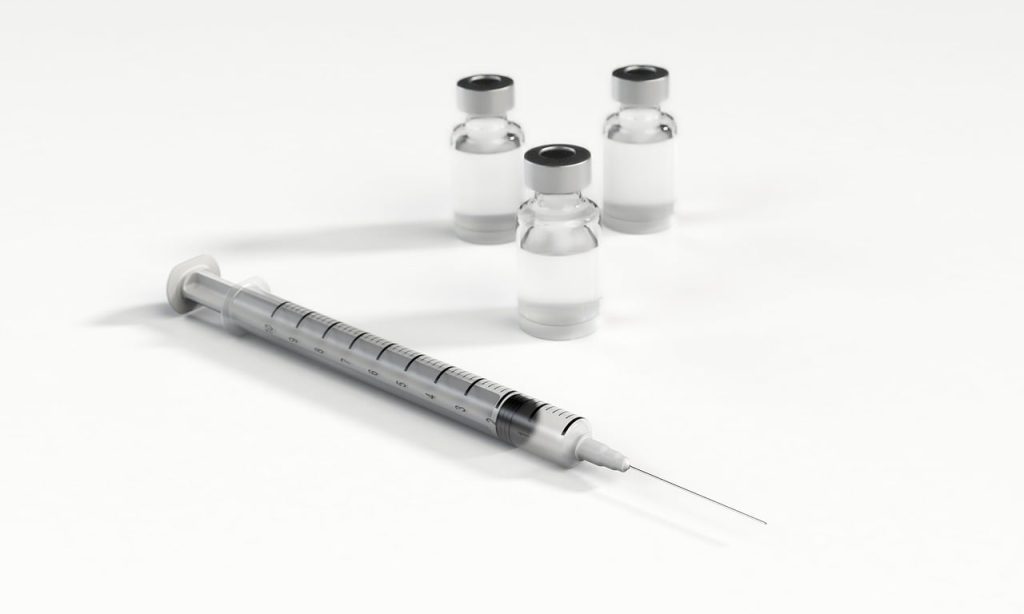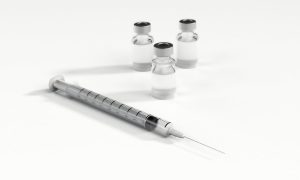All fields are required
Posted in Food Allergy,Our Blog on March 16, 2024


Image by Arek Socha from Pixabay
The United States Food and Drug Administration (FDA) recently approved a new food allergy drug meant to provide a prophylactic effect against some common food allergies. This is not a cure, but it provides hope for those with severe food allergies.
It does, however, come with certain limitations and potential risks of its own.
According to FARE, a nonprofit food allergy research, education, and advocacy organization, around 32 million people in the United States have food allergies. And a Centers for Disease Control and Prevention (CDC) estimate in 2021 indicated that almost 6% of people in the United States had a food allergy. When it comes to children, about 40% experiencing food allergies have multiple food triggers. One study calculated that one in 13 children have this risk-factor. That is about 2 per average classroom!
The problem seems to be getting worse. In fact, a CDC report demonstrated an increase in childhood allergies by 50%, with tree nut allergies nearly tripling. And it keeps on going.
A food allergy is an adverse health effect caused by a specific immune response when exposed to a given food. This allergic reaction occurs when the body interprets proteins or components of a certain food that are normally harmless as harmful.
And does so with gusto!
The extreme immune response creates a feedback loop within the body, causing serious imbalance in the immune response. This could result in anything from hives to a serious and life-threatening complication called anaphylaxis.
Each year, 200,000 people in the United States require emergency medical care for allergic reactions to food. More than 40% of children with a food allergy have experienced severe allergic reactions, including anaphylaxis.
Symptoms of anaphylaxis can include:
Anaphylaxis symptoms can quickly escalate, particularly airway constriction. Without immediate action, these types of serious allergic reactions can be fatal.
Someone experiencing a serious allergic reaction, such as anaphylaxis, requires immediate treatment.
Epinephrine injections (commonly called an epi pen) are the most common way to offset this life-threatening complication.
To work, though, it must be given quickly (within minutes). Failure to do so may result in a fatal allergic reaction.
In some cases, anaphylaxis may recur after epi pen injection. The body is still trying to come down from the hyper immune response. For that reason, medically supervised observation for 4 to 6 hours (in the emergency room) should follow to ensure that the allergic reaction has been resolved.
Before this new food allergy drug was available, those with food allergies were limited in what they could do.
For the most part, food aversion was the best bet. Meticulously combing through ingredients on food labels, questioning food service workers with enthusiasm nothing short of an FBI investigation, or in severe cases, completely preparing all of their own foods.
Some work has been successfully done on oral food allergy immunotherapy. This type of treatment involves consuming small amounts of a trigger food on a regular basis. This can, in some cases, raise the baseline for an allergic response reaction.
This therapy does not work for all people or all foods.
Something more effective was needed.
February 16, 2024, the FDA announced the approval of an injectable food allergy drug called Xolair (omalizumab). Previously approved for treatment of “moderate to severe persistent allergic asthma in certain patients” in 2003, this medication has been on the market and FDA approved for nearly 20 years. It has also been approved to treat “chronic spontaneous urticaria and chronic rhinosinusitis with nasal polyps in certain patients.”
This new treatment label allows prescribers to administer this food allergy drug as a prophylaxis to accidental exposure of trigger foods in patients with food allergies.
Xolair is a type of drug called “monoclonal antibodies.” It is designed to bind to the immunoglobulin E (IgE) antibodies the immune system responses to in triggering allergic reactions. In essence, it latches on to the IgE, holding its proverbial hands. Without a free “hand,” it cannot trigger the allergic reaction.
This doesn’t mean that food allergic individuals can throw caution to the wind and finally enjoy that PB&J they dreamed about as a kid. Unfortunately, it isn’t a perfect system.
“This newly approved use for Xolair will provide a treatment option to reduce the risk of harmful allergic reactions among certain patients with IgE-mediated food allergies,” said Kelly Stone, M.D., Ph.D., associate director of the Division of Pulmonology, Allergy, and Critical Care in the FDA’s Center for Drug Evaluation and Research. “While it will not eliminate food allergies or allow patients to consume food allergens freely, its repeated use will help reduce the health impact if accidental exposure occurs.”
Xolair is meant to provide prophylactic protection for accidental exposure. Food allergic people should continue to avoid trigger foods, as it has limitation in efficacy as well as types of receptive food allergies.
Receptive food allergies include:
Xolair is approved as an injection for immunoglobulin E-mediated food allergies in certain adults and children 1 year or older for the reduction of allergic reactions.
This medication requires multiple and regular treatments to reduce the risk of allergic reactions.
Like most drugs, Xolair comes with its own list of side effects. The most common being injection site reactions and fever.
Unfortunately, other side effects may include malignancy, fever, joint pain, rash, parasitic (worm) infections and abnormal laboratory tests.
This food allergy drug also comes with a boxed warning for anaphylaxis. For this reason, the first dose of Xolair must be started in a healthcare setting that is equipped to manage anaphylaxis. Depending on how well the patient tolerates the initial doses, self-administration (or administration by a caregiver) may be appropriate.
Xolair, prescribed as a food allergy prophylaxis, can help countless people suffering severe food allergies from accidental exposure. Not a cure, but a step in the right direction.
If you’d like to know more about food safety in the news, like FDA Approves New Food Allergy Drug, Xolair, check out the Make Food Safe Blog. We regularly update trending topics, foodborne infections in the news, recalls, and more! Stay tuned for quality information to help keep your family safe, while The Lange Law Firm, PLLC strives to Make Food Safe!
By: Heather Van Tassell (contributing writer, non-lawyer)